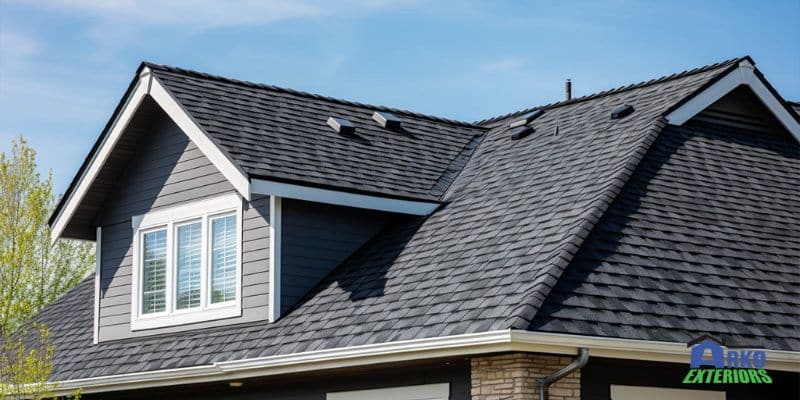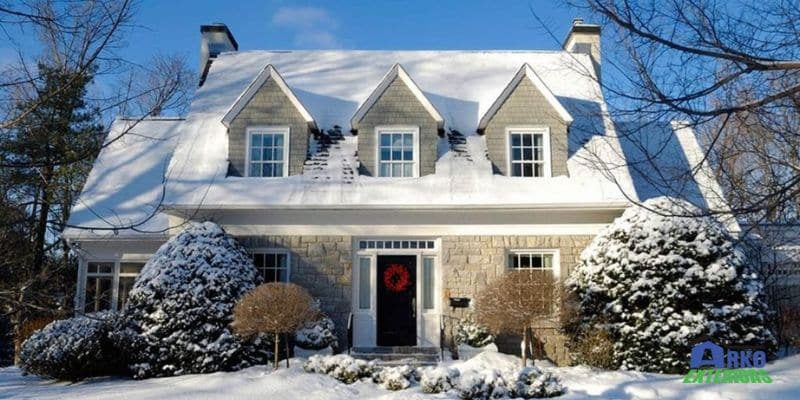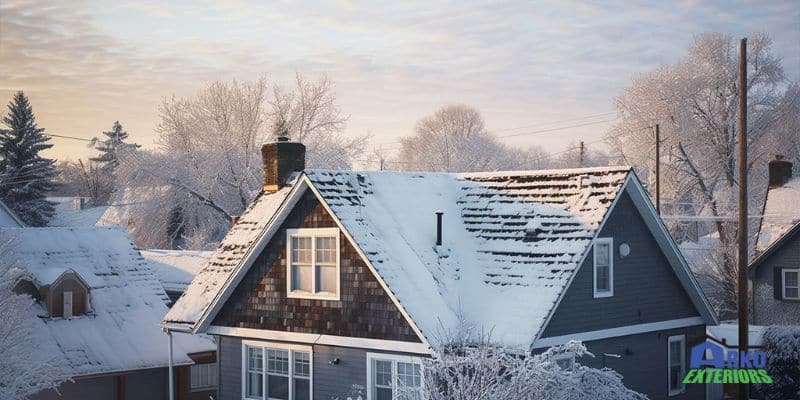Your roof plays an essential part in protecting your home. A winter roofing checklist is vital in protecting your home during the cold season. Regularly check on the attic ventilation and take action to ensure your roof is winter-ready.
Winter Roofing Checklist

With summer fading away and the days getting shorter, it is a good opportunity to check your roof. Soon, fall weather will not be as cold or harsh, and now is the best time to make any repairs for winter weatherproofing. Here are some winter roofing checklists that you should take during this season to prepare your roof.
Remove debris

In the fall, a variety of debris ends up on the roof such as dead leaves, logs, and tree branches that block off roof drains. These deposits may result in more snow as winter follows, and this may cause weight hazards and structural damage. Leaks are likely going to arise because of the extra snow hanging off the roof.
Therefore, it is necessary to clean your roof of debris before winter to avoid drainage problems, excess weight, and structural challenges associated with snow loading. This is because prioritizing this maintenance step guarantees a better and safer roof for winter months, thereby, reducing the chances of damage and leakages.
Check for leaks
Snow and ice come with winter, and repairing roof leaks should be done immediately. Small leaks can have a more dramatic impact during the colder months. Snow does not drain easily as it accumulates and melts. The snow acts like a dam holding back the water.
The pooling of this stagnant water worsens the problem of leakage, increasing the risk of water damage on your roof. It is important to intervene and adopt preventive measures before winter so that your roof will withstand the challenges posed by harsh weather.
Clean gutters
Your gutters are crucial to your roofing system. They block the free passage of water if they become clogged. It is advisable to clear gutters before winter to avoid drainage problems. Clogged gutters aggravate roof problems and highlight the importance of prompt maintenance.
When water settles above a roof for a considerable amount of time, it can cause significant lasting damage. A simple but effective practice is regular gutter cleaning to allow easy water drainage away from your roof.
Check downspouts
The downspouts must be attached firmly to the gutter since these connections sometimes come loose and interfere with water drainage toward the foundation. Water will not be directed in the planned manner if disconnected, which might cause damage.
Inspect and align downspout extensions that properly divert water away from the home to protect the house foundation’s integrity.
Trim trees near your roof
During the winter ice storms, risks become more severe in vulnerable areas where there are heavily loaded trees or falling limbs. Homeowners around trees should do thorough checkups and get rid of heavy limbs that are a danger. Get rid of dead limbs or hanging trees that risk your home.
Tree assessment is a difficult and complex process. Consulting a professional arborist adds another guarantee of correctness. Identifying and acting promptly on risks can make sure your house is safe from winter damage. Professional help goes a long way, especially in helping you conduct regular tree assessments.
Inspect your attic
Add attic inspection to your winter roofing checklist. Check for leaks, possible condensation, and insulation. Determine if there are any gaps or openings through which pests and wild animals can be allowed entry. Proper venting should be ensured to avoid moisture build-up. Make sure insulation levels are checked to ensure optimal energy efficiency as well.
Also, check for water stains, mold, or mildew, and deal with them as soon as they arise. Make sure of proper insulation to avoid heat loss. You should include an attic inspection in your winter roofing routine. With this, you can detect and solve the issues while the weather is still warmer.
Look around for missing shingles
Check the positioning of the shingles by doing a visual assessment. You should walk around your yard looking for displaced shingles in shrubs or along your fence line. Look for granules in your home area, especially in the driveways and pavements.
These granules play a vital role in the roofing system and the presence of some of them on the ground could indicate the probable malfunction of the roofing system. You need to identify and deal with such issues in good time for maximum effectiveness of your roof. These regular visual check-ups facilitate the early detection of problems.
Put appropriate insulation and ventilation
Look for water intrusion clues and adequate ventilation. To avert ice dam formation and roof damage, ventilation must be effective. The ice dams occur when snow that has built up changes into ice, expands, and penetrates beneath the shingle, leading to destruction. Properly insulated homes keep the heat out of the attics, preventing ice dams.
Also, water intrusion signs should be checked regularly, along with ensuring enough ventilation to avoid ice dams. This will make sure that the roof is protected so that, in addition to other things, your home’s structure may last long.
Get rid of squatters
Birds and other cute creatures like wildlife should not nest in your attic. For instance, squirrels will be able to chew through solid wood and create access points within minutes. When they settle down, many more are likely to follow. This puts your home and health at risk.
Promptly get rid of intruders immediately to avoid further mess. It is important to take preventive measures to safeguard your home against potential damage and to create a secure environment for you as soon as possible.
Conclusion
The winter roofing checklist is essential in maintaining the longevity of a house. These include improving insulation, and ventilation, and addressing possible issues that may occur during the winter season. Proactive steps lead to a strong roof that makes your home seasonally-proofed.

